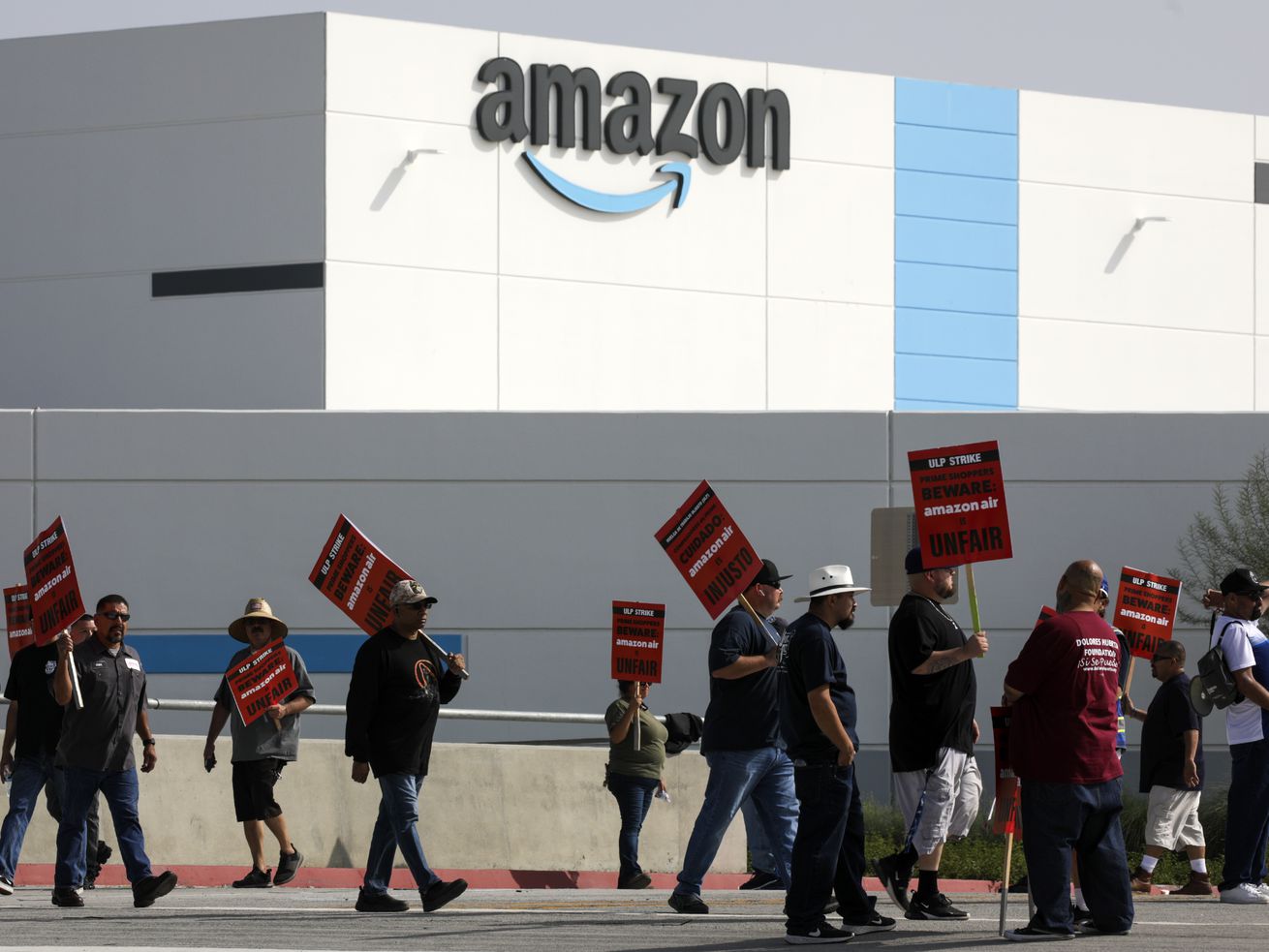
Amazon workers at the ALB1 warehouse near Albany, New York, voted 406-206 against unionizing.
The Amazon Labor Union has lost its second straight election at an Amazon warehouse, 406-206, delivering a blow to the momentum the new union had built with its historic win in April and underscoring the heavy odds stacked against organizing inside one of the world’s most powerful and richest corporations.
The warehouse, known internally as ALB1, is located in Schodack, New York, near the state’s capital of Albany, and opened in 2020. Heather Goodall, the lead worker organizer at the warehouse, previously told Recode that the reason to organize came down to three simple words: quality of life.
“We are missing the mark on quality of life,” she said. Goodall said workers deserved better wages, safer working conditions, and “breaks consistent with the work that we are doing.”
Unlike the other two Amazon facilities where the ALU previously had elections, ALB1 is known as an “XL” warehouse where, as Amazon described it in a job posting, staff “handles the big stuff — those unique customer orders that weigh over 50 pounds: big screen TVs, furniture, appliances, and more.”
Workers at the facility are making $17 an hour, after receiving a $1.30 hourly raise that was announced in the last month. The minimum hourly wage in upstate New York is $13.20.
“We’re glad that our team in Albany was able to have their voices heard,” Amazon spokesperson Kelly Nantel said in a statement, “and that they chose to keep the direct relationship with Amazon as we think that this is the best arrangement for both our employees and customers.”
Prior to the vote tallying, one of ALU’s lawyers, Seth Goldstein, said that the union has already filed dozens of unfair labor practices charges against Amazon with the NLRB, alleging offenses such as retaliation against union supporters, which could have been a sign that the union would contest the outcome in event of a loss.
Goldstein did not immediately respond to a message seeking comment.
But ALU founder Chris Smalls said in a statement that this “won’t be the end of ALU at ALB1.” He alleged that the election “wasn’t free and fair” and that “workers were subjected to intimidation and retaliation on a daily basis.”
“Most of all,” Smalls said, “we are filled with resolve to continue and expand our campaign for fair treatment for all Amazon workers.”
The union has five business days to file objections.
The election near Albany comes six months after the worker-led Amazon Labor Union secured its Staten Island victory, the first US union victory at a facility in Amazon’s history. That battle is not over, though. Amazon contested the union victory, claiming more than 20 issues with the union’s behavior, including harassment of voters and how the NLRB ran and staffed the election. An NLRB official who oversaw the objection hearing has recommended that all of Amazon’s objections be thrown out and that the Amazon Labor Union win be certified. That decision is now before an NLRB regional director, but Amazon CEO Andy Jassy insinuated at the Code Conference last month that Amazon will continue to battle the NLRB on the issue and is not conceding defeat.
“I think that’s going to take a long time to play out, because I think it’s unlikely the NLRB is going to [rule] against themselves,” Jassy said.
This election could be viewed as another test of whether organizers can secure a second victory or whether the original historic win in Staten Island was rooted, at least in part, in the fact that the creators of the Amazon Labor Union had themselves all worked in the facility. One worker at ALB1 told Recode this week that many of his colleagues “don’t want to be represented by someone with no experience in negotiations.”
A second ALU election at another Staten Island warehouse in May ended in a sizable defeat.
“In any of these elections, the odds are really stacked against the workers who are organizing,” Rebecca Givan, a Rutgers labor professor, told Recode earlier this month. “That’s true in any workplace but especially in these Amazon warehouses that have extremely high turnover and where the company has very deep pockets in terms of how much they can spend in their anti-union campaign.”
But workers are continuing to try. Earlier this month, Amazon workers at a warehouse in the crucial Inland Empire logistics region of Southern California filed a petition with the NLRB requesting to hold an election to unionize with ALU. Around 100 Amazon workers at a separate Southern California facility, one of the company’s three US air cargo hubs, reportedly walked off the job this month to demand a $5-an-hour wage increase and to protest what they say is company retaliation against worker organizers.
Amazon has historically fought union organizing vigorously, spending millions to hire outside consultants who hold mandatory anti-union meetings with workers, and strategizing in detail on how to neutralize powerful unions like the Teamsters, according to an internal company memo that Recode previously viewed. With a second straight defeat of a unionization attempt, Amazon’s tactics may be working.
